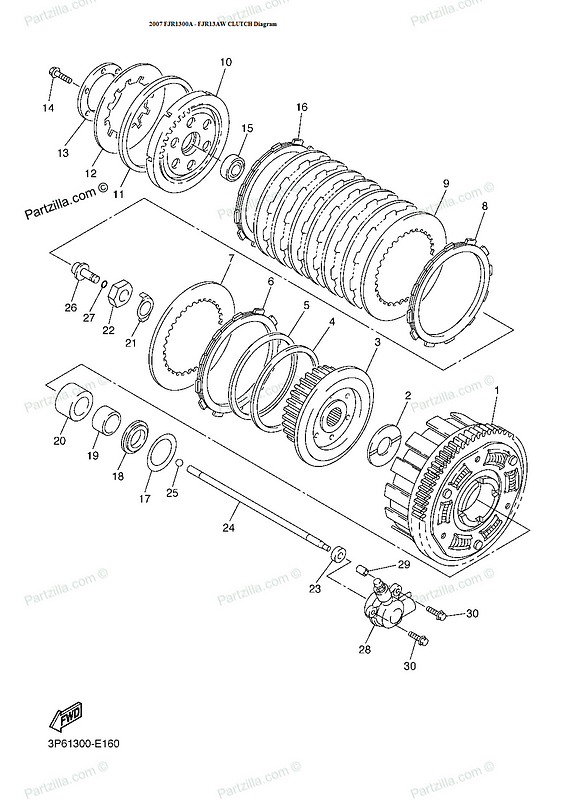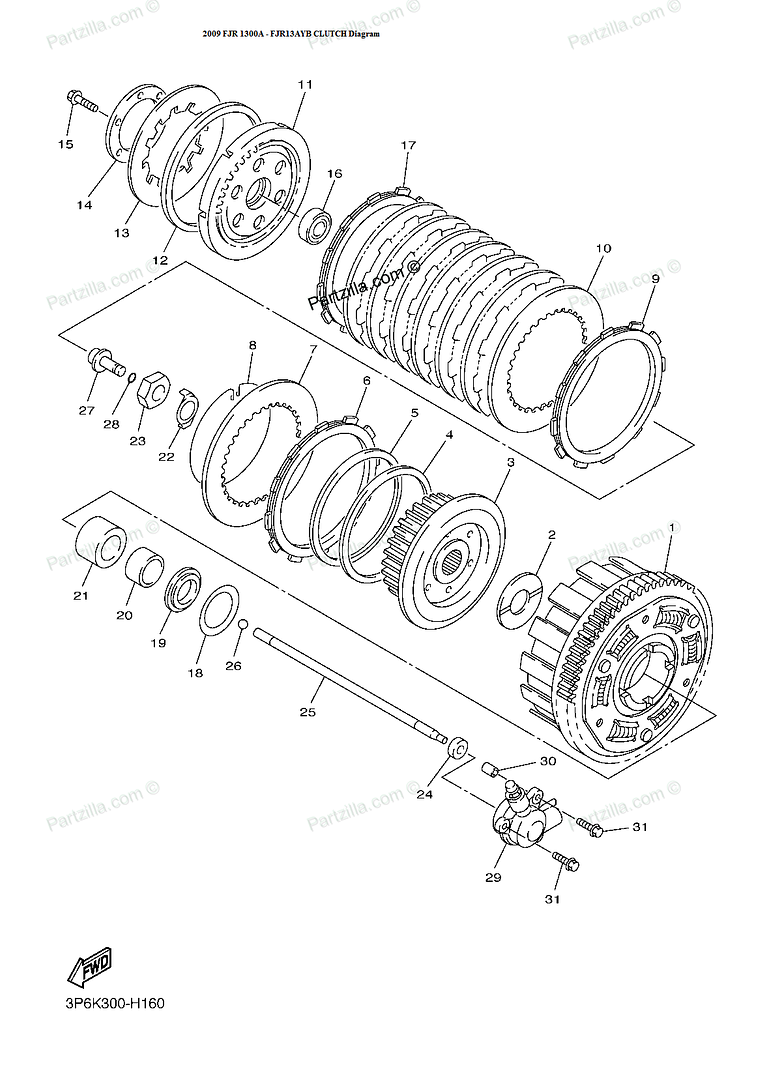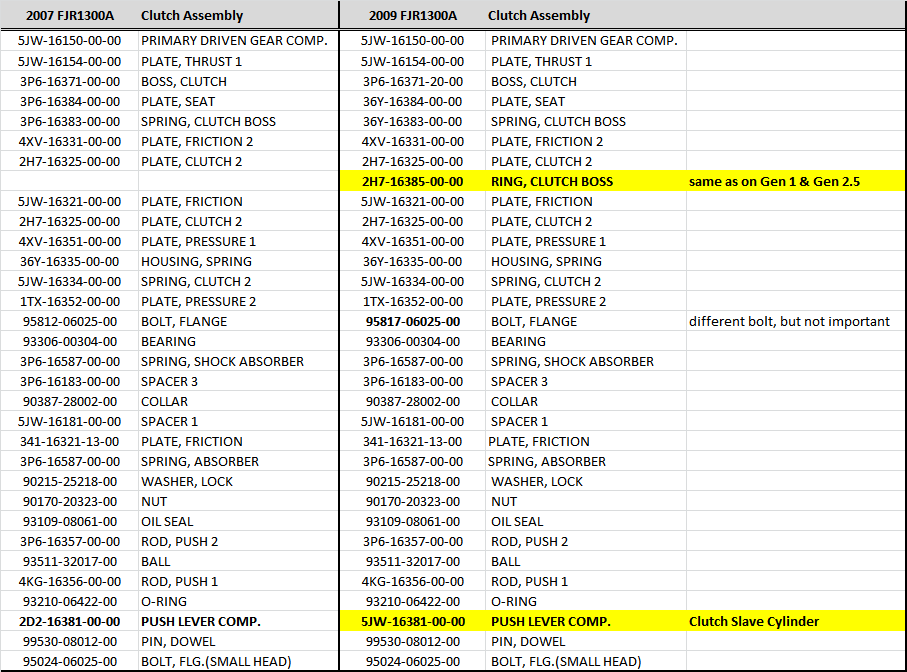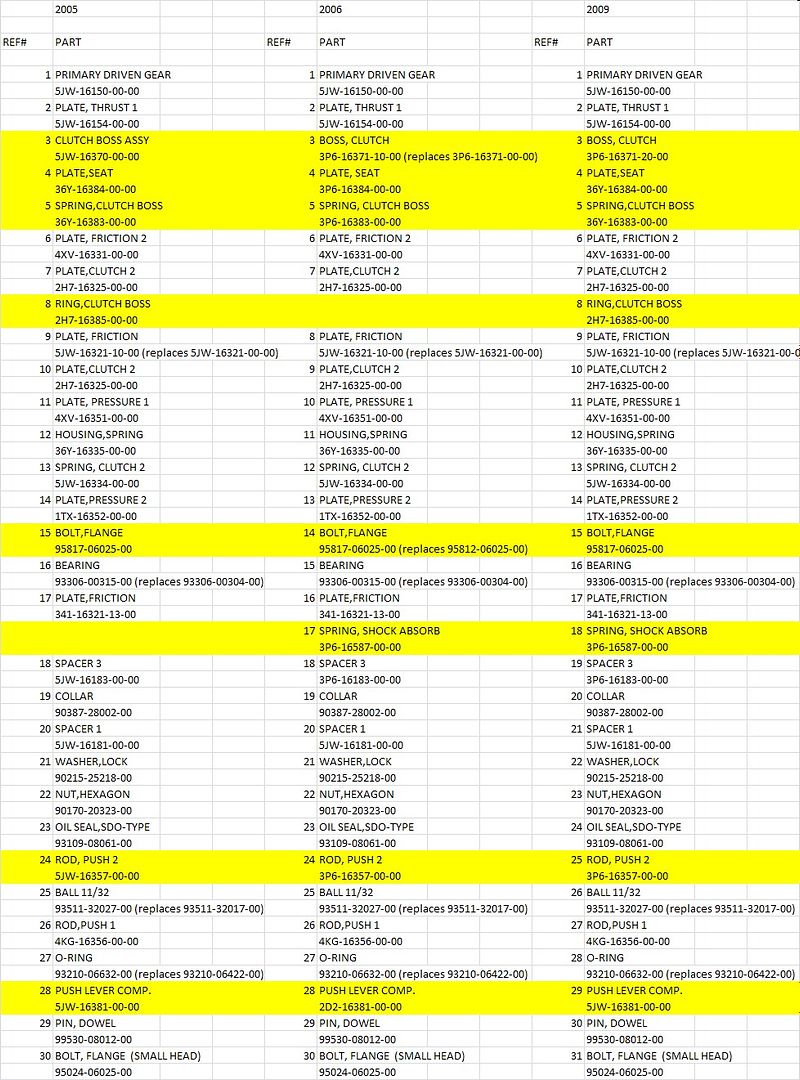JamesK
Got to ride
As has been covered in a number of threads, I have replaced the Clutch Slave Cylinder on my Gen 2 with a Gen 1 unit to achieve lighter operation of the clutch lever.
https://www.fjrforum.com/forum//index.php/topic/126113-changing-clutch-engagement-point-without-adjusting-the-lever/page-2
https://www.fjrforum.com/forum//index.php/topic/116816-clutch-slave-cylinder/page-2
https://www.google.com/search?q=gen+I+clutch+cylinder+on+gen+II+site:fjrforum.com&ie=utf-8&oe=utf-8&aq=t&client=firefox-a&rlz=1R1GGHP_en
As everyone who's done this mod I too have found that as a result the clutch lever setting and engagement point have changed for the worse.
There are threads discussing varying degrees of success/failure in trying to correct this issue by adding a small spacer into the clutch slave cylinder cup.
I was curious however why this same Gen 1 clutch slave cylinder works fine on the Gen 1 and Gen 2.5 (e.g. '09) FJRs. Since I'm planning to replace my clutch assembly in the near future (my OEM clutch has 185k miles on it) I went through the micro fiches of the clutch assembly of my '07 vs. '09 and the only significant differences I can identify are obviously the Clutch Slave Cylinder and an extra spacer found in the '05 and '09 Clutch Assemblies.
This extra part # 8 on the 2009 Diagram is called the "RING, CLUTCH BOSS" P/N: 2H7-16385-00-00, it looks like this is what was done differently on the '09 onwards FJRs to make the Gen 1 Clutch Cylinder work correctly.
Now the question is, when I order the replacement clutch parts can I simply order this Clutch Boss Ring and solve the engagement point issue the way the Yamaha engineers did?
2007FJR1300A-FJR13AW CLUTCH Diagram 2009FJR1300A-FJR13AYB CLUTCH Diagram


2007 vs. 2009 FJR1300 A Clutch Assembly Comparison

https://www.fjrforum.com/forum//index.php/topic/126113-changing-clutch-engagement-point-without-adjusting-the-lever/page-2
https://www.fjrforum.com/forum//index.php/topic/116816-clutch-slave-cylinder/page-2
https://www.google.com/search?q=gen+I+clutch+cylinder+on+gen+II+site:fjrforum.com&ie=utf-8&oe=utf-8&aq=t&client=firefox-a&rlz=1R1GGHP_en
As everyone who's done this mod I too have found that as a result the clutch lever setting and engagement point have changed for the worse.
There are threads discussing varying degrees of success/failure in trying to correct this issue by adding a small spacer into the clutch slave cylinder cup.
I was curious however why this same Gen 1 clutch slave cylinder works fine on the Gen 1 and Gen 2.5 (e.g. '09) FJRs. Since I'm planning to replace my clutch assembly in the near future (my OEM clutch has 185k miles on it) I went through the micro fiches of the clutch assembly of my '07 vs. '09 and the only significant differences I can identify are obviously the Clutch Slave Cylinder and an extra spacer found in the '05 and '09 Clutch Assemblies.
This extra part # 8 on the 2009 Diagram is called the "RING, CLUTCH BOSS" P/N: 2H7-16385-00-00, it looks like this is what was done differently on the '09 onwards FJRs to make the Gen 1 Clutch Cylinder work correctly.
Now the question is, when I order the replacement clutch parts can I simply order this Clutch Boss Ring and solve the engagement point issue the way the Yamaha engineers did?
2007FJR1300A-FJR13AW CLUTCH Diagram 2009FJR1300A-FJR13AYB CLUTCH Diagram


2007 vs. 2009 FJR1300 A Clutch Assembly Comparison

Last edited by a moderator:




